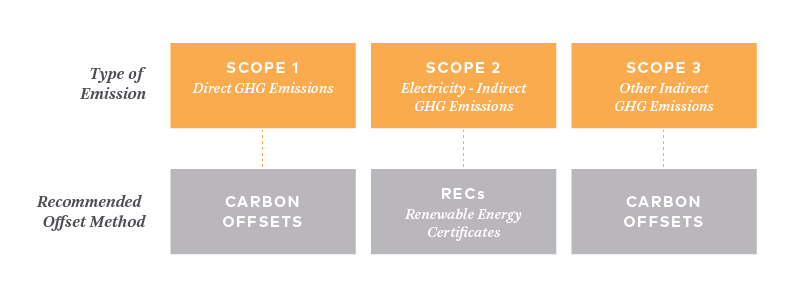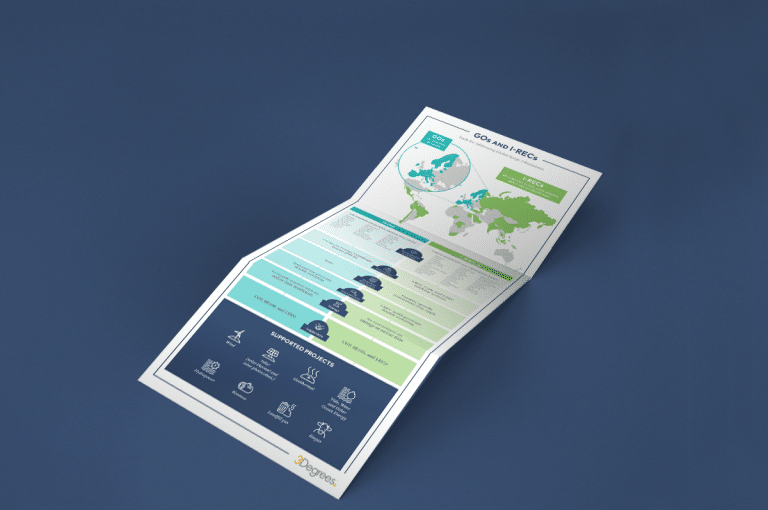Most human activities emit greenhouse gases (GHGs). The dramatic rise began in the 1800s with the Industrial Revolution and today many GHG emitting activities are considered essential to the global economy. However, that doesn’t mean we are powerless. Here are three steps you can take to mitigate and reduce your carbon footprint.
- Conservation through reduction and efficiency measures. Local utilities and hardware stores often have programs and products that help you use less every day.
- Choosing renewable energy. Onsite generation, direct purchase agreements or matching usage with renewable energy certificates are all ways to get the environmental benefits of clean power for the electricity you do use.
- Balancing carbon emissions. Purchasing carbon offsets allow you to compensate for non-electricity based emissions resulting from boilers, vehicle fleets and travel as examples.
Counting GHGs
To get started we recommend you prepare a GHG inventory following the World Resources Institute’s Greenhouse Gas Protocol. The protocol recommends you sort GHG producing activities by Scope 1, 2 and 3 criteria. Doing so will give you clear understanding of where GHG emissions originate. It will also give you a sense of where you have direct control over changes versus where you simply have influence, such as your supply chain. The separation by scope also avoids ‘double-counting’ of emissions.
- Scope 1: Direct GHG emissions that occur from sources owned or controlled by the organization, such as emissions from combustion in boilers, furnaces, vehicles, and other assets owned or controlled by the organization.
- Scope 2: GHG emissions from the generation of purchased electricity consumed by the organization. Scope 2 emissions physically occur at the facility where electricity is generated.
- Scope 3: GHG emissions that are a consequence of the organization’s activities but occur from sources not owned or controlled by the organization. For example, Scope 3 GHG emissions are those associated with the production of purchased goods, employee commercial flying, or the use of sold products.
Once calculated you may be surprised by the size of your business’ carbon footprint. The good news is each scope category can be addressed:

What are greenhouse gases?
The health of earth’s climate is linked to how much sunlight is absorbed and reflected by our atmosphere. Our atmosphere acts like a filmy blanket around the planet, holding in some but not all of the heat. Some common atmospheric gases can thicken the blanket trapping in heat and cause temperatures to rise. These gases are called “greenhouse gases” or GHGs.




